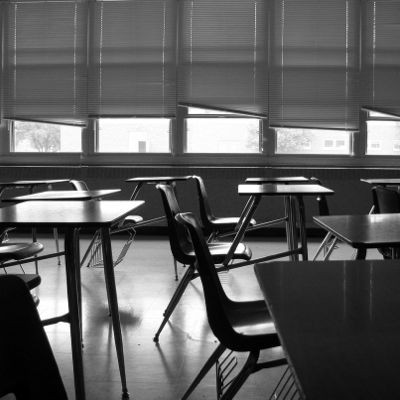MESD Announces $140,000 Settlement with Oregon Teacher of the Year





 Email to a friend
Permalink
Email to a friend
Permalink
Tuesday, June 30, 2015
GoLocalPDX News Team

Brett Bigham with President Obama
Multnomah Education Service District (MESD) has entered into a settlement agreement with the 2014 teacher of the year, Brett Bigham, in which they will pay him $140,000 in exchange for him withdrawing labor and harassment complaints and agreeing not to sue them for discrimination and wrongful termination.
Bigham was terminated from his position as transition program teacher in April, with the district citing absenteeism and insubordination, after he filed complaints with Oregon's labor watchdog and the state's Teachers Standards and Practices Commission for discrimination and relatiation.
Brett Bigham, the first openly gay teacher of the year to use the position as a platform for LGBT rights, spent the better part of 2014 criss-crossing the state giving speeches about how LGBT students can deal with bullying. Bigham filed a grievance with TSPC against several senior staff at the Multnomah Education Services District (MESD) in September 2014 for what he alleged was harassment and bullying for his sexual orientation. He then filed another complaint with Oregon’s labor watchdog in November for retaliation.
MESD reaffirmed in their settlement that discrimination is antithetical to their beliefs and reinforced that they had done nothing wrong.
Bigham has stated that he will continue to advocate for students with special needs and bring awareness to the national issue of suicide rates of LGBT youth.
Related Slideshow: 9 Challenges Facing Portland Public Schools
Aiming to lower expulsion rates, especially for students of color, and raising high school graduation rates are among Portland Public Schools’ top priorities. See what other challenges the schools are facing here.

Prev
Next
Raising Graduation Rates
In 2012-2013, about 75 percent of students graduated with their cohort, while another 7 percent of their cohort completed some form of high school requirements during a fifth year, finishing in 2013-2014.
Sascha Perrins, senior director of PK-12 Programs, said Portland Public School District has raised rates by doing more career technical education alongside regular curriculum, giving students deeper offerings all the way back to middle school, as well as by identifying students sooner who have fallen behind.
Graduation rates got a little boost from another data change in 2013-2014 that could be a little deceiving. In 2013-2014, the state began counting students who received a modified diploma in the four-year cohort rate, reasoning that a modified diploma is enough to qualify for college financial aid.

Prev
Next
Reducing Expulsions
The district also has a strategy to address an issue that goes hand in hand with graduation rates: exclusionary discipline of students. “We’re seeing a really high link with kids who are excluded (via expulsion) and kids who don’t graduate on time,” said Perrins. “I’m not saying if you miss… suddenly you can’t graduate, but it’s more symptomatic of your experience in school.”
Additionally, students of color are far more likely to experience expulsion than white students—a national trend that doesn’t miss Portland. In 2013-2014, 10.5 percent of African American students were expelled at least once, while 7.4 percent of Native Americans, 4.4 percent of Pacific Islanders, 3.9 percent of Hispanics, 3.8 of percent mixed race, 2.3 percent of whites and 1 percent of Asians were expelled.
In the last few years, the number of students being expelled has decreasd, but the rate of expulsion for African American students has not changed much. In 2013-2014, they were about 4.6 times as likely to be expelled than a white student.

Prev
Next
Improving Leadership
Portland Association of Teachers President Gwen Sullivan said that the district has huge leadership issues starting with principals but also at the central office.
“People are just being mean. In some cases it feels like they are being encouraged to be,” said Sullivan. “I don’t know when (the district) will actually fire a principal. They tend to go on leave and disappear.”
Recently, the district has had a number of principals abruptly go on leave—one after being accused and arrested for domestic abuse and the other after teachers complained about the hostile environment, reported Willamette Week.
Sullivan said that the central office must have good leadership, too, in order to address these issues.
“We know that in a school where you have a supportive principal, the teacher feels supported, the parents feel supported, the kids feel supportive and the environment is good to teach in,” Sullivan said.

Prev
Next
Improving Parent and Community Engagement
“(Parent involvement) is one of the things that everyone talks about and everyone tries to figure out how to approach,” said Otto Schell, long time parent advocate and PTA volunteer. “Some communities have done really well at engaging parents at the school level and others not so much.”
“The PTA model works very effectively in some schools and in other schools we don’t reach all the parents,” said Schell, who is currently a Grant PTA member and the legislative director for the Oregon PTA.
Schell gave the example of watching the Caeser Chavez community come out and presented during the budget meeting at Roosevelt High School, which included a Spanish translation services. “It’s a great example of how you can do it if both the school staff and parent community coalesce and work together,” he said.

Prev
Next
Redrawing Boundaries
Due to anticipated growing enrollment, PPS began a boundary review process this year that would address balancing the district population in the available space in school buildings.
Some sticky areas include achieving diversity of racial and ethnic groups and addressing space needs in some schools.
Additionally, the district has a mix of K-5 and K-8 schools, about which parents have had mixed opinions. Some feel that middle school students get stronger offerings in a 6-8 school as classes like band or choir are difficult to offer middle school students in a K-5 school lacking a larger population.
“Middle schools should have shop, art, band… a variety of different things,” said Sullivan.
A district-wide committee is rethinking boundary changes for the fall 2016 school year.

Prev
Next
Completing Building Upgrades and Rebuilds Using 2012 Bond Money
Hand-in-hand with rebalancing school populations, the district is planning and currently undergoing building changes for Portland’s growing student body. While some plans are already underway, the district will still consider whether building spaces already in the works will be enough to house enrollment projections 15 years from now.
“We’d hate to overbuild or underbuild,” said Miles.
The district has released its list of 27 summer projects in elementary schools, which includes seismic upgrades as well as science classrooms and ADA (American with Disabilities Act) work. It is also beginning work at Franklin High School with a groundbreaking at noon on Saturday, May 16, and at Roosevelt High School. Work at Faubion PK-8, which will create a shared space with Concordia University, begins in the fall. Planning for modernization at Grant High School is currently underway with construction planned for 2017.
There are a few more years of the bond after that during which the district could consider how to adapt other smaller buildings.

Prev
Next
Ensuring Third Graders Can Read to Learn
Before third grade, teaching is more directed at helping teach students how to read, but in third grade, the curriculum shifts to reading in order to learn more. “You have to read to access more information,” said Perrins. “We want every child to access all that learning to come up after third grade.”
Reading to learn by third grade is a priority of the Oregon Department of Education, which administers state testing in third grade. But that will only tell you what a student has learned in the past, said Perrins, which is why the district administers smaller “formative assessments” to understand what struggling students are learning. These could be done every two to three weeks.
To support reading in elementary schools, the district hires instructional specialists especially at schools with higher poverty, divides students into smaller groups, provide mentorship for younger teachers and professional development options to strengthen teaching.
Sullivan added that in the case of reading the district is doing a good job by adding 25 more librarians next year.

Prev
Next
Improving funding
The district isn’t the only player to consider in the game of funding schools. But certainly many challenges would be easier to face with more funding.
This year, the Oregon Legislature increased funding from the last biennium to $7.255 billion spread across the state. However, most local school districts had supported a $7.5 billion budget for K-12. The reduced number isn’t really anything new for public schools, which have for years been asking for more than the legislature gives it.

Prev
Next
Providing More Wrap Around Services
Sullivan said teachers could benefit from better connections with other services available to their students from impoverished families. They need things like counselors, mental health providers and food assistance—some of which can come from other sources like the county.
But, sometimes the extra support could come from special education services, which requires the district to be supportive of teachers making referrals.
Enjoy this post? Share it with others.





 Email to a friend
Permalink
Email to a friend
Permalink























 Delivered Free Every
Delivered Free Every
Follow us on Pinterest Google + Facebook Twitter See It Read It